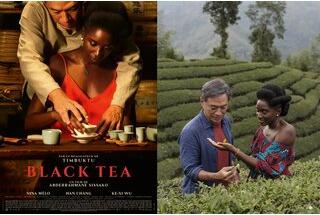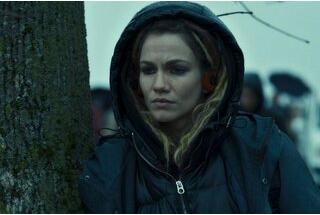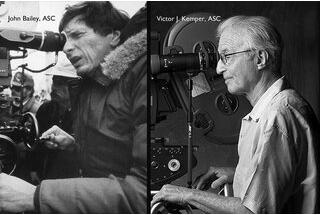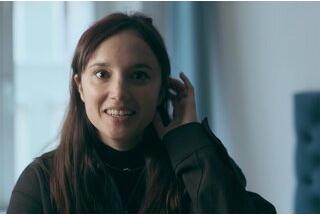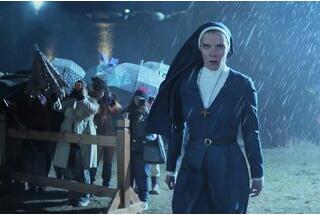Interview with Vladislav Opelyants, RGC, about his work on "Petrov’s Flu", by Kirill Serebrennikov
A hypertrophied Surrealist realityWhen you read the screenplay, how did you imagine this film’s visuals?
Vladislav Opelyants: At Kirill’s request, I began by reading the novel the film is an adaptation of. This is a book by Alexei Salnikov, and I admit that, at first, I had a hard time imagining how it could become a film. It’s at once a thriller, a science-fiction book, and also has a surrealist side to it. But, when I read the screenplay, everything became much clearer. The story was indeed quite cinematographic! Meanwhile, Vlad Agai, the production designer, had already begun to work on the script, and when I began work on the film, we started to do location scouting together. Of course, it was very important for each set to be able to bring the spirit of the times we were attempting to portray to the screen. Unfortunately, a lot of buildings that are part of Russia’s cultural inheritance have been renovated or transformed, not to say disfigured. And that’s without even considering the avalanche of advertising billboards in the city streets. So, we went searching for rundown old neighborhoods, old shacks, and old nightclubs like the one where the New Year is celebrated in the story. It was a long-term project, but Kirill and Vlad and I knew that attention to detail would be one of the keys to this project’s success.
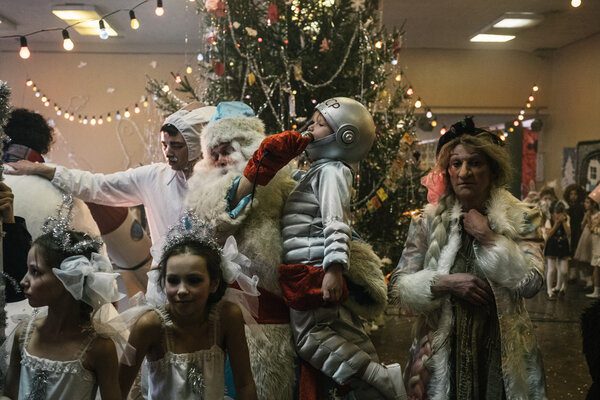
The film functions a bit like a uchronia. It’s very hard to pinpoint when it takes place…
VO: One of my challenges as a DP was to differentiate the time periods on screen, especially since they are close to one another… I personally delved into my own memories, and that emotional connection helped me to find my way. You must realize that in Russia, thirty or forty years might pass without any noticeable change occurring! The differences were so slight that I decided to augment them through my approach to the visuals, but without falling back on a kaleidoscope of stylistic techniques. With such a range of characters and time periods, we were also aiming to make a film that would have both coherency and its own identity. This comes through in the fact that all the different eras in the story are part of a single cinematographic dimension. To tell the truth, only the two parts that are obviously flashbacks (the black and white part and the part with Petrov’s childhood memories, shot from his point of view) were exceptions to the rule.
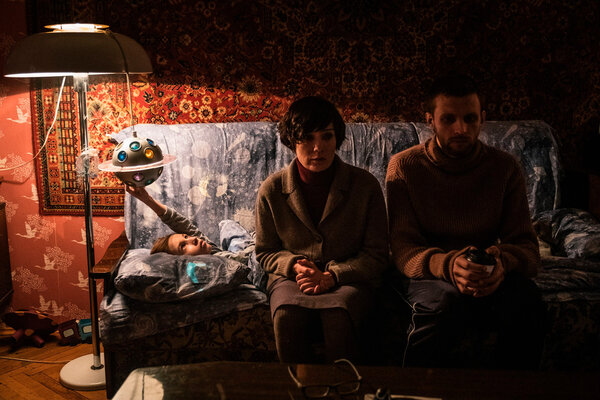
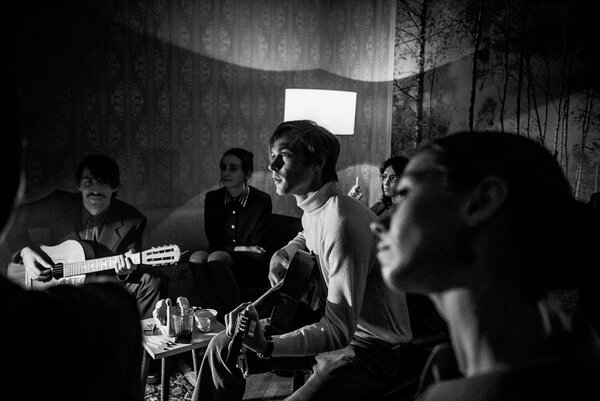
What did you emphasize most while shooting this film?
VO: For me, the most important part of a film is its atmosphere. It must be realistic, and the lighting must contribute to what is happening on screen. This film is of course not full of bright and sunny ambiences, except for the childhood flashbacks. The rest is a sort of hell-on-earth, and our intention was to show how claustrophobic the protagonist’s world is, and how each of the other characters is leading a life made of a personal, private mixture of reality and fantasy. There is no border between fantasy and reality for them. The disappearance of this border comes through in the mix of macabre and depressing lighting in a realistic setting. Even the sets we built in studio were faithful copies of authentic places from the past. For example, the apartment was a tight space with low ceilings… as I remember there was nothing abnormal about that! I would say that the essence of this film is that it is a sort of hypertrophied Surrealist reality.

But where does this oppressive visual style come from?
VO: The style comes directly from the book. The protagonist is ill, he has a fever… That’s why he sweats so profusely. Each set, whether it be the busses, the cars, or the apartments, have windows covered in mist. The faces are sweaty and so are the windows… everything in the environment contributes to a feeling of malaise. So, the fever isn’t just a simple plot element; it’s at the heart of the film’s image, the characters, and the atmosphere.
As for the color palette, I admit that I love that balance between green and yellow. It might seem rather pessimistic, but I’d describe myself as an optimist who sees the world through pessimistic eyes! A bit like Petrov’s character.
Look, if you were to imagine the black and white portions of the film in color, I think I’d have made them in the same green-yellow tone, but with denser blacks. For the childhood memories, you’ll have noticed how different they are. We shot with a very small Blackmagic camera, its movements were instinctual, like the point of view of a child. The color palette is richer, with snow and sun. But, if you look carefully, the camera isn’t quite comfortable in its own skin! There’s a bit of sadness there, too.
The film is full of rather virtuoso long takes…
VO: Kirill’s thing is long continuous shots. And that’s not because he’s too lazy to edit! It’s because he wants to directly immerse the viewer in the atmosphere of his film. This is not just a way of following the story, but also of becoming a stakeholder in what is happening on screen. That is why these continuous shots are given such an important place in this film. These are usually shot with a handheld camera, with the Alexa Mini, which I mainly use. Sometimes, we went for the Steadicam, and the only tool we never used was the dolly. We thought this approach was the most authentic one for immersing the viewer in the heart of our tale.
How does Kirill Serebrennikov work?
VO: I’ve formed a team with him for a long time now. He’s the kind of director who mainly emphasizes the actors’ performance in association with the image. That’s why we always rehearse a lot, and sometimes for a long time beforehand. Our budget is often limited, and we try to rehearse as much as possible, or at least to prepare in such a way that we can determine in advance the best way to shoot to obtain the best possible result. We don’t use a storyboard, and the fine-tuning of each shot comes from the place we are shooting. Once we’ve found our locations, we meet with the Steadicam operator, or sometimes just with my phone that I use to film locations during scouting. The next step is to rehearse with the camera and the actors, and then we’re ready to attack shooting of each scene.
Tell me about the very long shot where Petrov meets with the suicidal writer…
VO : Thank you for picking up on this shot! We shot it on a set we built in an abandoned factory. It’s 18 minutes long! It required a very long day of rehearsals, followed by a very long day of shooting! This was absolutely the most complicated shot of the entire film, and Kirill decided to begin shooting with it. Everyone in the crew, including myself, were all a bit anxious about getting off to such a flying start, but Kirill explained that afterwards, we wouldn’t be afraid of anything else on this film! It was shot using the Steadicam, by my marvelous friend Alexander Vdovenko. Some parts, such as when the camera follows the characters into the elevator, were particularly hard to manage. We also had to combine the transformations such as the lighting of the fire, which forced us to get it right in a single take. It was a true team effort, and everyone on set worked very hard. I am particularly grateful to my first AC, who was on the front lines and whose slightest mistake might have broken the magic for the viewer. But I tend to think that the more challenges there are to meet during a shoot, the better the image comes out!
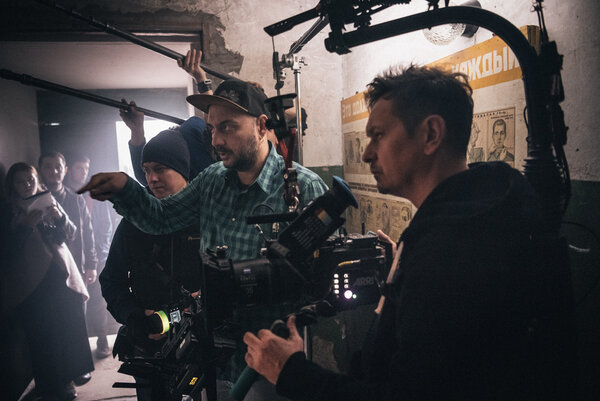
What equipment did you use to shoot this film?
VO: We shot using an Alexa Mini, my favorite camera. We’d selected two series of lenses: Hawk V-Lites and Arri Master Prime Anamorphics. Each series was used depending on the needs and desires for each particular scene. For example, the black-and-white part was shot with the Arri lenses, and the color portion with the Hawks. In the library scene, we often used Kardan Denz tilt and shift lenses to control the focus by zones. Because we were holding the camera most of the time, it was a nightmare for the assistant cameraman. The idea was to achieve a certain degree of emotion in these shots. With their shortcomings and personality, these lenses really create a very particular atmosphere. And to push that even further, we shot at full aperture.
The film also sometimes uses miniatures and incorporates them into shoots on location…
VO : Yes, we enjoyed using miniatures at several different points in the film. For example, we had miniatures of the apartment. In some shots, we’d begin with the actor in the real location, and then move to the miniature during the shot. From my point of view, it was very well done, and I hope that we succeeded in tricking the viewer. In order to achieve that effect, we shot with the Panavision T-Rex system. I think it was justified by the shift in the protagonist’s conscience. There’s another example in the film, outdoors, when the heroine arrives on the bus, shot in black and white from a crane. When the camera descends, it passes in front of the actress, and the traces of footsteps in the snow become smaller and smaller and end with a miniature of a city and little animated people. I really liked that movement because it shows how ironically small our world is, in reality. It is part of all of those invisible transitions in the film between story arcs. In order to do it, we had to rebuild parts of locations adjacent to the locations themselves so that we could go from one to the other as if by teleportation. An example is in the sequence where the two protagonists exit the apartment to smoke a cigarette, and a fat lady comes out from behind, takes our hero by the hand, and brings him into the big room where the children’s Christmas party is taking place.
Weakened by a high fever, Petrov is brought by his friend Igor on a long, alcoholic walk, at the border between dream and reality. Gradually, Petrov’s childhood memories begin to surface and blend together with the present…
Interview by François Reumont, translated from French by A. Baron-Raiffe, for the AFC.
 En
En
 Fr
Fr
